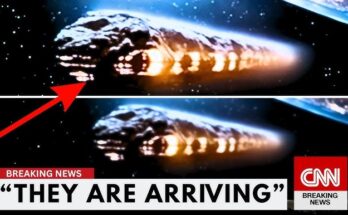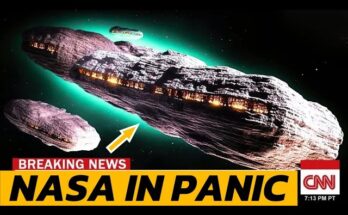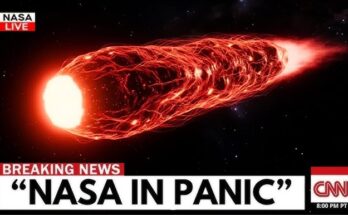Astronomers are observing strange behavior from 3I ATLAS, an interstellar object that entered the solar system months ago. Recent telescope data shows that the object is rotating at a highly unstable speed, causing bursts of light and trails of metallic debris to scatter into space. The fragments are burning up as they enter Earth’s atmosphere, creating bright streaks that resemble meteor showers.
Experts explain that normal space objects do not rotate this fast unless influenced by external forces. The uneven distribution of its surface materials may have caused an imbalance, leading to its erratic spinning. The debris released appears to be composed of reflective metal fragments that disintegrate upon contact with the atmosphere, but the source of the metal remains unknown.
Several observatories have reported multiple flashes moving in synchronized patterns, which has led some scientists to believe 3I ATLAS may have a hollow or structured core. Spectroscopic readings indicate that the fragments reflect light in a way inconsistent with natural minerals, suggesting the object could contain engineered material.
Government space agencies have not yet confirmed the composition of the falling debris, but early ground samples found in polar regions contain rare elements not typical in meteorites. Researchers are now studying these particles to understand their origin and whether they represent remnants of alien technology or an unknown cosmic process.
While there is no immediate threat to Earth, experts are urging continued monitoring of 3I ATLAS. Its unpredictable motion and the strange metallic emissions could hold critical clues about how interstellar objects behave when exposed to solar radiation. The phenomenon is still under investigation, but it may redefine what we know about deep-space travelers entering our system.



